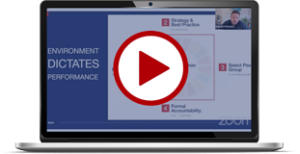When you do what you love, what you want to do, and it’s what the world needs, you create your why.
Aligning vocation, mission, passion and profession creates a personal and business why. The why is the bigger purpose. Everyone needs a why: to do work they love from a passionate point of view.
This brings us back to the purpose economy. If you love it, the world needs it, you are paid for it, and you are great at it: you have your why.
Simon O. Sinek, author, speaker and consultant, wrote Start With Why: How great leaders inspire everyone to take action (2009), which was described by TED as ‘a simple but powerful model for inspirational leadership all starting with a golden circle and the question “Why?”.
Do you know your why? The purpose, cause, or belief that inspires you to do what you do?
He discovered that all inspiring leaders and organisations of the world think, act and communicate in a similar way. They do not only know what they do and how they do it, but they know exactly why they do it. Sinek’s model has what you actually do in the outer circle. In the middle circle is how you do what you do. The most important circle, though, is the inner circle – why you do what you do. This can be applied to people, your personal life, as easily as it can be applied to businesses and start-ups. You need to start with the why. The goal is to do business with people who have the same beliefs and you will attract people who believe what you believe.
Some great examples of whys: Uber wants to evolve the way the world moves; Life is Good wants to spread the power of optimism; Ikea wants to create a better everyday life for people.
Marketing people say, ‘You don’t buy what you like, you like what you buy’, and Simon Sinek says, ‘People don’t buy what you do, they buy [because of] why you do it’.
People today want to have even more purpose in life. The youngest generations among us are driven by the why question. They want to know why they’re doing things. Aaron Hurst wrote a book called The Purpose Economy, where the question ‘Why?’ is centre stage. There’s also the Japanese Ikigai, which means ‘reason for being’ and elegantly shows the correlation and intersection of values which make your life worth living.
A great example of a company finding its why is the successful American Tom’s Shoes company, with its purpose being ‘With every product you purchase, Toms will help a person in need. One for one’. Blake Mycoskie, founder of TOMS and behind the idea of One for One™, got the idea during his voluntary work in Buenos Aires where he noticed kids were running barefoot, and it was Bill Gates who encouraged him, saying a lack of shoes was a major contributor to diseases in children. They replicated this concept with eye wear to restore sight for people in need and with bags to give mothers a safe birth. What a purpose, what a meaning, what a big stake in the ground for humanity.
So did YOU find your why?












